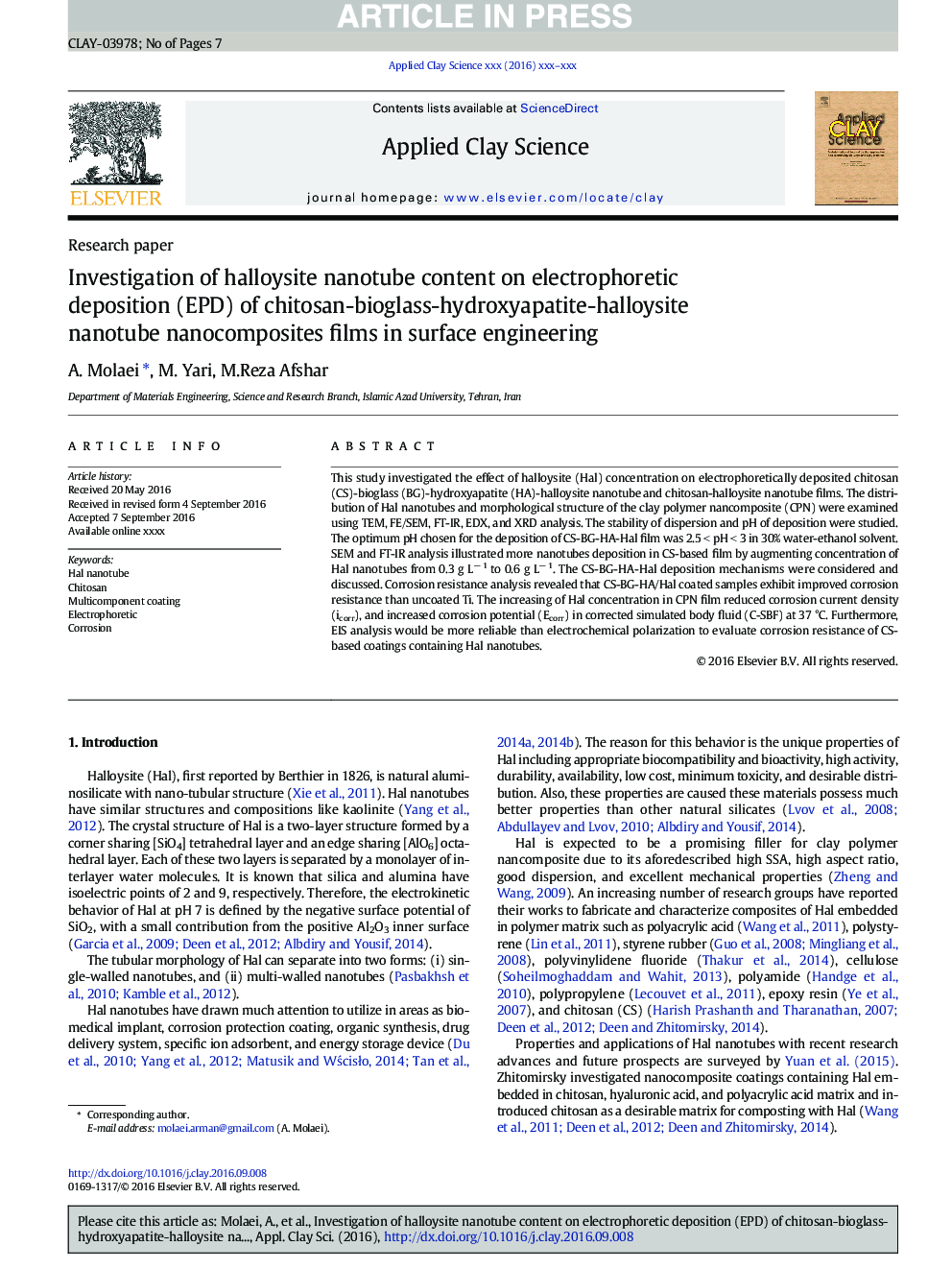| Article ID | Journal | Published Year | Pages | File Type |
|---|---|---|---|---|
| 5468957 | Applied Clay Science | 2017 | 7 Pages |
Abstract
This study investigated the effect of halloysite (Hal) concentration on electrophoretically deposited chitosan (CS)-bioglass (BG)-hydroxyapatite (HA)-halloysite nanotube and chitosan-halloysite nanotube films. The distribution of Hal nanotubes and morphological structure of the clay polymer nancomposite (CPN) were examined using TEM, FE/SEM, FT-IR, EDX, and XRD analysis. The stability of dispersion and pH of deposition were studied. The optimum pH chosen for the deposition of CS-BG-HA-Hal film was 2.5 < pH < 3 in 30% water-ethanol solvent. SEM and FT-IR analysis illustrated more nanotubes deposition in CS-based film by augmenting concentration of Hal nanotubes from 0.3 g Lâ 1 to 0.6 g Lâ 1. The CS-BG-HA-Hal deposition mechanisms were considered and discussed. Corrosion resistance analysis revealed that CS-BG-HA/Hal coated samples exhibit improved corrosion resistance than uncoated Ti. The increasing of Hal concentration in CPN film reduced corrosion current density (icorr), and increased corrosion potential (Ecorr) in corrected simulated body fluid (C-SBF) at 37 °C. Furthermore, EIS analysis would be more reliable than electrochemical polarization to evaluate corrosion resistance of CS-based coatings containing Hal nanotubes.
Keywords
Related Topics
Physical Sciences and Engineering
Earth and Planetary Sciences
Geochemistry and Petrology
Authors
A. Molaei, M. Yari, M.Reza Afshar,
